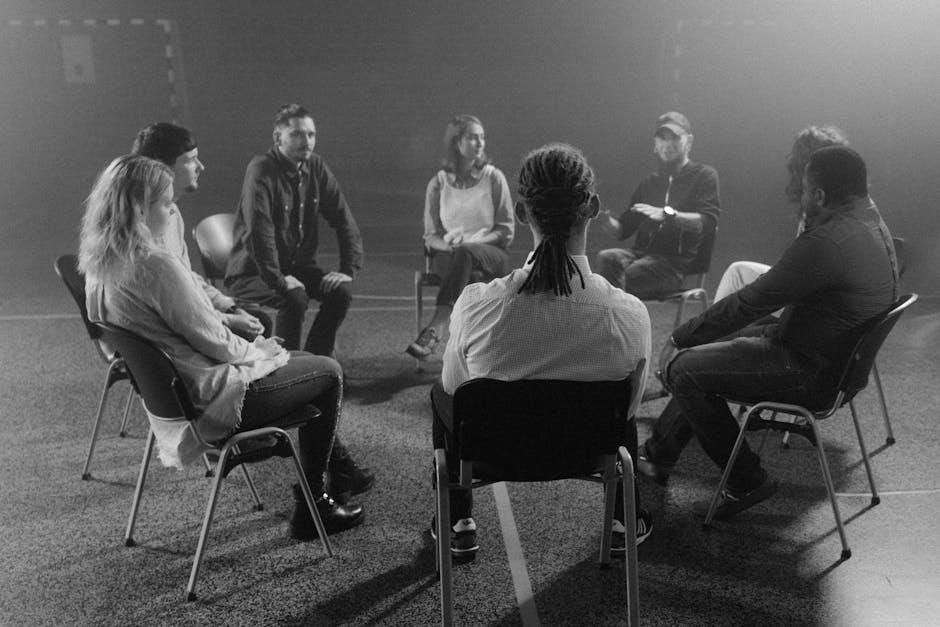James Donaldson notes:
Welcome to the “next chapter” of my life… being a voice and an advocate for mental health awareness and suicide prevention, especially pertaining to our younger generation of students and student-athletes.
Getting men to speak up and reach out for help and assistance is one of my passions. Us men need to not suffer in silence or drown our sorrows in alcohol, hang out at bars and strip joints, or get involved with drug use.
Having gone through a recent bout of depression and suicidal thoughts myself, I realize now, that I can make a huge difference in the lives of so many by sharing my story, and by sharing various resources I come across as I work in this space. http://bit.ly/JamesMentalHealthArticle

Bipolar Disorder and Substance Use
Bipolar disorder, also known as manic-depressive disorder, involves bouts of major depression and periods of mania or hypomania— euphoria, poor judgment, and extreme risk-taking activity — in an often-debilitating cycle. It usually begins in late adolescence or early adulthood.
Symptoms
Teens and young adults with bipolar disorder will show signs of both depression (prolonged sadness, lack of interest in things they previously enjoyed, sleeping too much) and mania (periods of excitability or irritability, exaggerated self-confidence, even recklessness). For many, the onset of bipolar disorder is marked by a depressive episode; in others, it is a manic episode. How long and how often between depressive and manic episodes varies quite a bit, especially in younger people.
Being on the lookout for symptoms of mania is particularly important if someone already has depressive symptoms. Bipolar disorder with an unnoticed manic component can be misdiagnosed as a major depressive disorder — but the medications used to treat depression can be dangerous for someone with bipolar disorder, making accurate diagnosis very important.
Signs of Mania in Bipolar Disorder:
- Drastic personality changes
- Excitability and irritability
- Inflated self-confidence
- Grandiose/delusional thinking
- Recklessness
- Decreased need for sleep
- Increased talkativeness, racing thoughts and scattered attention
- Psychotic episodes, or breaks from reality
Signs of Depression in Bipolar Disorder:
- Loss of interest or pleasure in things once enjoyed
- Marked weight loss or gain
- Decreased or increased need for sleep
- Lethargy or fatigue
- Feelings of hopelessness, helplessness, worthlessness
- Excessive or inappropriate guilt
- Preoccupation with death, plans of suicide or an actual suicide attempt
Psychotic episodes in young people with bipolar — essentially break from reality — can occur during manic episodes and severe depressive episodes. During a manic episode, these can include delusional thinking, such as proclaiming, “I can fly!” Psychosis is often the first outward sign of bipolar disorder.
Bipolar Disorder Treatment
Medication is essential to the treatment of bipolar disorder, as is the involvement of the whole family.
The first-line medication used to treat bipolar disorder is often a mood stabilizer such as lithium and various anticonvulsants (an anti-seizure medication), which are generally effective at treating manic symptoms and lowering the frequency and severity of both manic and depressive episodes. In children and adolescents, antipsychotic medications can be used as first-line treatments for acute manic episodes. Other drugs may be prescribed to treat symptoms like psychosis (antipsychotics) or trouble sleeping (anti-anxiety medicine). Many people with bipolar disorder take more than one medication that requires monitoring by an experienced clinician.
Bipolar disorder is often treated with cognitive behavioral therapy (CBT) in addition to medications. CBT helps children and adolescents with the disorder understand what triggers their episodes, how their thoughts influence their feelings, and how to control and manage them. A specialized form of CBT called social rhythms therapy helps reduce symptoms by encouraging regular and predictable routines. Family therapy is often employed to engage parents and other family members in keeping track of symptoms and managing stress levels to prevent the onset of manic or depressive episodes.
Bipolar Disorder & Interaction With Substance Use
Nearly 60 percent of individuals with bipolar disorder have a co-occurring substance use disorder. Many adolescents and young adults receive a diagnosis of bipolar disorder after seeking help for substance use issues since drugs can bring on the manic episodes that are the most visible sign of bipolar disorder.
The behavioral symptoms of bipolar disorder also often lead to substance use problems. Impulsivity is a defining symptom of bipolar disorder — not only during a manic episode but also between episodes. Young people with bipolar disorder are thus more likely to experiment with drugs and alcohol always.
Finally, as with many disorders, drug and alcohol use complicate diagnosis and make treatment difficult. Medications used to manage bipolar disorder have side effects such as weight gain and sluggishness that young people dislike and often decline to take. In addition, during stable stages, they may be convinced they don’t need help or prefer to self-medicate. Medication non-compliance is a common consequence of substance use in bipolar disorder, which causes increased frequency and severity of mood episodes.
Drugs commonly used by youth with bipolar disorder, like nicotine and alcohol, also present a real chemical barrier to treatment effectiveness. Nicotine competes with enzymes necessary to make medications work in the body, and the effects of alcohol on the liver also decrease the availability of these enzymes. These drugs literally change the way a person’s body responds to psychiatric medications, leading to a smaller or larger than expected effect. Parents and concerned adults can help explain the importance of medication adherence and other substance interactions.

James Donaldson is a Washington State University graduate (’79). After an outstanding basketball career with WSU, he went on to play professional basketball in the NBA with the Seattle Supersonics, San Diego/L.A. Clippers, Dallas Mavericks, New York Knicks, and Utah Jazz. He also played for several teams in the European Leagues in Spain, Italy, and Greece, and he toured with The Harlem Globetrotters to wrap up his career. James was an NBA All-Star in 1988 while playing center for the Dallas Mavericks. In 2006, James was inducted into the Pac-10 Sports Hall of Fame and also the Washington State University Athletic Hall of Fame. In 2010, James was elected as a board member for the NBA Retired Players Association.
James frequently conducts speaking engagements (motivational, inspirational, educational) for organizations, schools, and youth groups.
In 2010, James was the recipient of the NBA Legends of Basketball ABC Award, awarded for outstanding contributions in Athletics–Business–Community.
He believes in being a role model for success and professionalism to the scores of young people to whom he devotes so much of his time. He currently serves on several boards and committees and is a member of many organizations.
James believes in developing relationships that create a “Win-Win” environment for everyone involved, and in being the best he can be!
For more information about James Donaldson or to request he speak at your event, contact him at:
www.StandingAboveTheCrowd.com
JamesD@StandingAboveTheCrowd.com
1-800-745-3161 (voicemail & fax)
James Donaldson is the author of “Standing Above The Crowd” and “Celebrating Your Gift of Life” and founder of the Your Gift of Life Foundation which focuses on mental health awareness and suicide prevention, especially pertaining to our school aged children and men.
If you’re interested in having James come and speak to your group of young adults, business entrepreneurs, aspiring political and community leaders, and athletic teams, please contact him at jamesd@yourgiftoflife.org and or leave a personal message for him at 1-800-745-3161. Keep up with him and read about how he is reaching out and making a difference in the lives of so many around the world at www.yourgiftoflife.org



